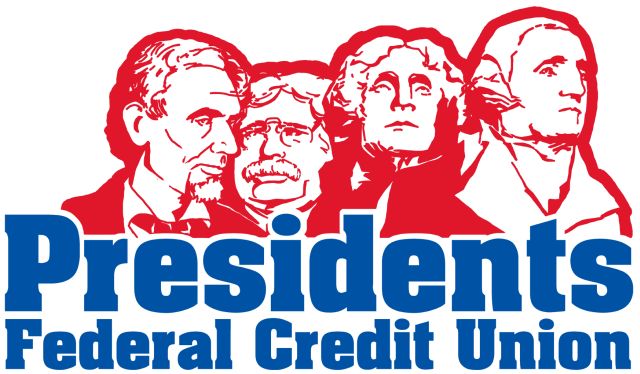A share secured loan is a personal loan that is secured using the balance in your savings as collateral. This type of loan generally has lower interest rates than other personal loans because it is secured.
Share secured loans are a good option for those with poor or no credit scores. These loans can be a great way to build your credit score because they are easier to qualify for than other loans and they typically have low interest rates.
What are share secured loans?
A share secured loan uses the assets in a share account, otherwise known as a savings account, to back up the loan. Both banks and credit unions offer loans backed by savings, which may also be called “passbook loans” or “certified pledge loans.”
When you take out share secured loans, the equivalent assets within your savings account are frozen and become available again as you pay off the loan. The maximum you’re allowed to borrow varies from bank to bank. Some lenders may allow you to borrow the full amount in your savings account or a percentage. The money is repaid in monthly installments that are generally spread over two to 15 years.
Because they offer little risk to lenders, share secured loans typically come with low fixed interest rates, often 1 percent to 3 percent over the dividend or interest rate paid to the account by the bank.
How do share secured loans work?
A share secured loan is secured by your savings account, share certificate account or money market account. When you’re approved for a share secured loan, your lender will place a hold on the savings amount you’re borrowing against.
You can repay the loan through monthly automatic withdrawals, direct deposit or monthly check. If you fail to repay the loan, the savings your lender is holding as collateral will typically be used to cover the loan.
Although your savings are used to back up the loan, you should avoid making late payments or defaulting. This may cost you penalties or late fees and can hurt your credit history because share secured loans are often reported to the credit bureaus.
If building credit is your goal when seeking a share secured loan, consider taking out a small amount that is easier to pay off quickly.
Who are share secured loans best for?
Share secured loans could be a good idea for people in a few different situations.
- People who need to establish credit: If the loan is reported to the credit bureaus, making monthly payments on time can help build your credit profile.
- Those who have a poor credit history: For consumers who have less-than-stellar credit, this type of loan can be easier to qualify for than a traditional personal loan. “The lending institution knows the borrower has the collateral in their savings account. So, the bank is taking very little risk,” says Daniel Milan, managing partner of Cornerstone Financial Services.
However, share secured loans may not be a good idea for everyone. You may want to look into other loan options if you fall into one of the following groups of people:
- Those who will struggle to pay back the loan: With a share secured loan, you will have to pay it back at the end of the term. If you can’t pay it back, the bank will take the money you have in savings and you will also owe interest. Not sure if you will be able to pay back the loan? Don’t risk having to pay interest plus the total borrowed.
- People who can qualify for other types of loans and credit cards to build credit: A share secured loan is a good way to start building credit if you have limited options, but it is not the quickest or best way to boost your credit score. If you can qualify for other types of loans or a credit card, these may be better ways to improve your credit quicker.
- Those who don’t need to improve or build credit: With a share secured loan, you are essentially paying interest on money you already have. If you don’t need to build your credit, you may be better off simply using the money you have in savings instead of taking out a loan using your savings as collateral.
Why use share secured loans?
There are a number of reasons to use share secured loans instead of taking out cash from your savings account:
- Build credit. If you have bad credit or no credit at all, these loans can help you build credit. Every time you make loan payments or pay off a loan, it will be reported to the credit reporting agencies, and your credit score should receive a boost. Ask your lender to report loan payments to the credit bureaus, and verify that it did so by checking your credit report. Each year, you can ask for a free credit report from each of the major credit reporting bureaus: TransUnion, Equifax and Experian.
- Save on future loans. While share secured loans may cost you some money in interest payments now, a higher credit score should allow you to save money through lower interest rates on loans in the future.
- Use for any purpose. Unlike specific kinds of loans — like auto loans tied to cars — you can use share secured loans for a variety of things. The general rule of thumb, however, is that you should only use them to pay for something you really need and can’t afford upfront.
While using your savings account as collateral may seem riskier than taking out an unsecured loan, share secured loans offer real opportunities to rebuild credit and improve your financial future. If you opt for an unsecured loan instead, compare rates online before applying.
What to consider before taking out this kind of loan
If you’re considering a share secured loan, keep in mind that there are some potential drawbacks or risks associated with this type of borrowing.
For instance, the savings you use as collateral will be frozen until you repay the loan in full, so you won’t have access to the funds. If you default on the loan, your savings account will likely be used by the bank to pay off the installment loan balance, Milan says. “This could wipe out your household’s rainy-day fund.”
As with any type of loan or credit application, be sure to read the fine print and review all of the terms of the agreement before signing on. Make sure you understand the true cost of the loan, including any up-front costs or annual fees, to ensure that you can make loan payments on time and avoid defaulting.
“Make sure the payment fits within your budget,” says Katie Bossler of GreenPath Financial Wellness. “The number one factor of a credit score is paying bills on time, so if the purpose of the loan is to build credit, it’s important for the consumer to make sure that the monthly payment will fit into the budget and can be paid on time each month.”
How to qualify for a share secured loan
Because you’re essentially borrowing from yourself, qualifying for a share secured loan is typically a simple process. The most important factor is the amount of savings you have in your account. Many lenders offer instant approval for this type of loan, so you can have loan funds available the same day you apply.
Here’s how to get started:
- Research different lenders. See which lenders offer share secured loans. Depending on the type of collateral you have, you may want to seek out different lenders. Certain banks may only offer this type of loan secured by savings, but others could allow you to use a certificate of deposit (CD) as collateral.
- Consider all the factors. Different lenders may have different terms and conditions. Some may offer you a lower interest rate. Many lenders allow you to borrow up to 100 percent of your savings or CD balance, while others allow you to borrow a percentage of what you have deposited. The repayment timeline for a share secured loan also varies by lender and amount borrowed, but it is generally from five to 15 years. Decide what you need and research who will give you the best terms.
- Apply in person or online. Many lenders have an option to apply for a loan online. Some lenders may require you to make an appointment and apply in person. When you decide on a lender, fill out the application with the personal information required.
- Find out if you are approved. You may get approved instantly or you may have to wait to hear back. Once you are approved, you can start using the money you’ve borrowed.
Alternatives to share secured loans
If you’re looking to meet short-term financial goals or improve your credit score, there are other options available besides share secured loans.
Similar to a share secured loan, a secured credit card is attached to a deposit account. The credit limit is the same amount deposited into the account. If you don’t make the agreed payments, the money is removed from the account.
A credit-builder loan also works like a share secured loan, but you pay off the loan before you can access the money. The lender you choose will deposit the funds into a savings account. When the loan is paid off, you’ll have access to the money. This makes the credit-builder loan better suited for long-term needs.
Another option is a secured personal loan. A secured personal loan is backed by an asset you already own, such as a car, boat or RV. If you default on the personal loan, the lender can seize your property to recoup its losses.
Next steps
A share secured loan can be a good option to consider if you’re seeking to establish or rebuild credit. Although there’s a cost to taking out this kind of loan, it may make sense if your goal is to eventually obtain other kinds of credit that are more difficult to qualify for, such as a mortgage.
Just be sure when using this kind of loan that you understand all of the terms and conditions, and check with your lender to confirm that the loan will be reported to credit bureaus.
Cincinnati Credit Union – Presidents Federal Credit Union (FCU) is federally insured and backed by the full faith and credit of the United States government for all accounts up to $250,000.00. We have over 60 years of expereince and offer the best values with friendly customer service.



Recent Comments